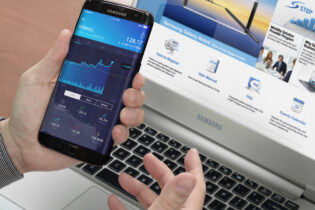From a channel partner perspective, there are three main ways of thinking about making money off of selling mobile computing devices in the enterprise.
The first is to simply resell a service from a carrier where the cost of the smartphone has been amortized over several years. As most solution providers know, the amount of profit they can generate reselling carrier plans is relatively limited. Low margins and tight competition are barriers for some resellers in this market. Because of this, solution providers should have a variety of additional mobile computing devices and services at their disposal to augment their core smartphone offering.
The best way for many solution providers to accomplish their goal of a profitable smartphone sale is to often sell what is known as an unlocked mobile phone, which means the phone itself does not come with a SIM card pre-installed by a carrier. Instead, the solution provider installs the SIM card on behalf of the customer. There are two primary scenarios where that approach makes more sense for the customer:
1. An organization needs to deploy large numbers of mobile phones across multiple geographic regions.
2. When the use case is confined to a specific location, such as a hospital or retail outlet.
In those latter cases, the phone is used as a lower cost alternative to a more expensive device. Connectivity is usually provided in those locations via a wireless network, meaning monthly mobile service plan charges can be avoided. Naturally, there are also a range of service opportunities that can be presented by solution providers once the phone is sold, spanning everything from extended warranties to accidental damage.
Accelerate Your Business Growth
Access professional development tools designed to give you a competitive edge. Download Now
Extending Service Opportunities
However, properly considered, that base offering creates a second opportunity for solution providers to craft a more comprehensive mobile computing solution. Instead of thinking in terms of reselling the mobile phone itself, solution providers can work with their clients to create a true mobile computing experience. That solution may include complementary accessories, such as wireless charging stations, or additional devices like a smartwatch that extends smartphone functions out to a wearable device.
But room for growth can go beyond the hardware itself. Additional channel resources can include software and services to secure phones, as well as enterprise mobile management (EMM) tools designed to enable IT departments to manage a fleet of mobile devices. In fact, many solution providers employ these tools to deliver those capabilities as managed service.
Eric McCarty, vice president of mobile product marketing for Samsung Business, notes that by the time a solution provider adds up all those opportunities, each deal can generate anywhere from 20 to 30 points of margin. That number can increase considerably further, especially now that it’s possible to seamlessly integrate smartphones within a desktop computing environment.
Earlier this year, Samsung launched its DeX docking station, which allows a user to connect a smartphone to a monitor, keyboard and mouse, creating a desktop experience powered by the phone. It has also partnered with Citrix, VMware and others to deliver an optimized VDI experience on DeX, allowing users to access a virtual desktop with all their Windows applications. In addition to reselling the DeX docking station, the solution also affords channel partners the opportunity to resell the desktop hardware.
Looking at the Larger Picture
Of course, mobile computing devices are really a means to a larger end. Most organizations are looking for solution providers that can not only help them build, acquire, deploy and manage mobile computing devices, but also help them build the applications that run on them. In the third mobile computing scenario, the opportunity expands to encompass smartphones, tablets, 2-in-1s and PCs, as solution providers help those organizations transform their business.
In those instances, the opportunities to generate multiple streams of high margin revenues are as boundless as any digital business transformation project will allow. The cost of mobile computing devices themselves is often just the beginning, and the technology is usually embedded within a much more lucrative contract for software and hardware services. Within digital transformation, the channel partner has a role to help their client create a scalable, customizable framework that will help their business grow over time.
If you put it all together, it’s apparent there are three classes of smartphone opportunities. The first is focused on providing the base capability every organization requires. The second class adds on to that base by reselling a broad range of complementary products and accessories. The third class combines software, hardware and services to drive a new generation of digital business processes that wouldn’t be possible if the smartphone didn’t exist in the first place.
There’s been a lot of discussion over the year concerning how channel partners can make money selling mobile computing devices. However, it’s becoming clear that the real issue is not the price of the devices, but rather putting all the necessary pieces in place to take advantage of an unparalleled opportunity that helps foster relationships, long-term contracts and innovation.








